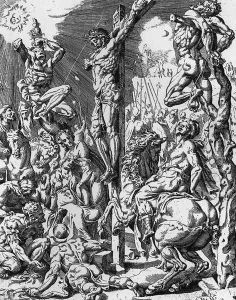Dirck Volkertsz Coornhert Paintings
Dirck Volkertsz Coornhert, a notable figure in the Dutch Renaissance, was born in Amsterdam in 1522 and died in Gouda in 1590. His life spanned a period marked by significant religious, social, and political upheaval in the Netherlands. Coornhert was not only an artist but also a prolific writer, philosopher, and theologian, whose ideas influenced the early stages of the Dutch Enlightenment. His contributions to Dutch culture and thought are acknowledged for their depth and breadth, encompassing a wide range of subjects from theology to prison reform.
Coornhert’s early career was as an engraver and etcher, working under the tutelage of the artist Philips Galle. His artistic work, however, soon became overshadowed by his intellectual pursuits and his advocacy for religious tolerance and freedom of conscience, ideas that were radical for his time. Throughout his life, Coornhert was embroiled in many controversies due to his outspoken views, particularly his opposition to the Calvinist doctrine of predestination, which he argued undermined the moral responsibility of the individual to choose between good and evil.
In addition to his theological writings, Coornhert also made significant contributions to Dutch literature, translating classical works into Dutch and writing original poetry and plays. His translations made the works of classical authors accessible to a wider Dutch audience, thereby playing a crucial role in the development of Dutch Renaissance literature. Coornhert’s advocacy for moral reform and his belief in the perfectibility of mankind also led him to write extensively on the need for reform in the criminal justice system, arguing for rehabilitation over punishment.
Despite facing persecution for his beliefs, including periods of imprisonment and exile, Coornhert remained a staunch advocate for his principles until his death in 1590. His legacy is that of a Renaissance man who was ahead of his time, advocating for ideas that would only come to fruition in the centuries following his death. Coornhert's work laid the groundwork for the Dutch Golden Age, influencing a generation of thinkers and artists who would propel the Netherlands to the forefront of European culture and thought.
